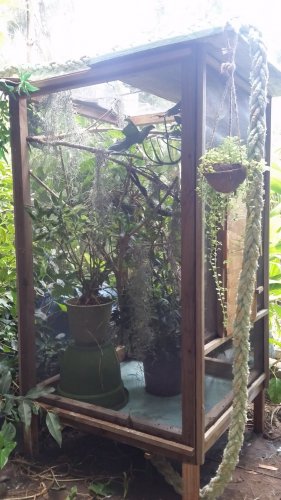FloydPakasloslo
Member
I just got myself a new wild caught Jackson after swearing never to do that again. Basically it is the only available type of Jackson here, since they are locally caught. A friend of mine was on a hike and found one, offered to me, and since I was looking to get a new one, I accepted.
What I want to know is, is there any little boost or treatment that is recommended for WC individuals? I know treating them fully for parasites can be dangerous, and for the immediate time frame I don't want to overly stress him, but if there is an immune booster or suppliment that has worked for other people with WC, I'd love to know.
What I want to know is, is there any little boost or treatment that is recommended for WC individuals? I know treating them fully for parasites can be dangerous, and for the immediate time frame I don't want to overly stress him, but if there is an immune booster or suppliment that has worked for other people with WC, I'd love to know.






